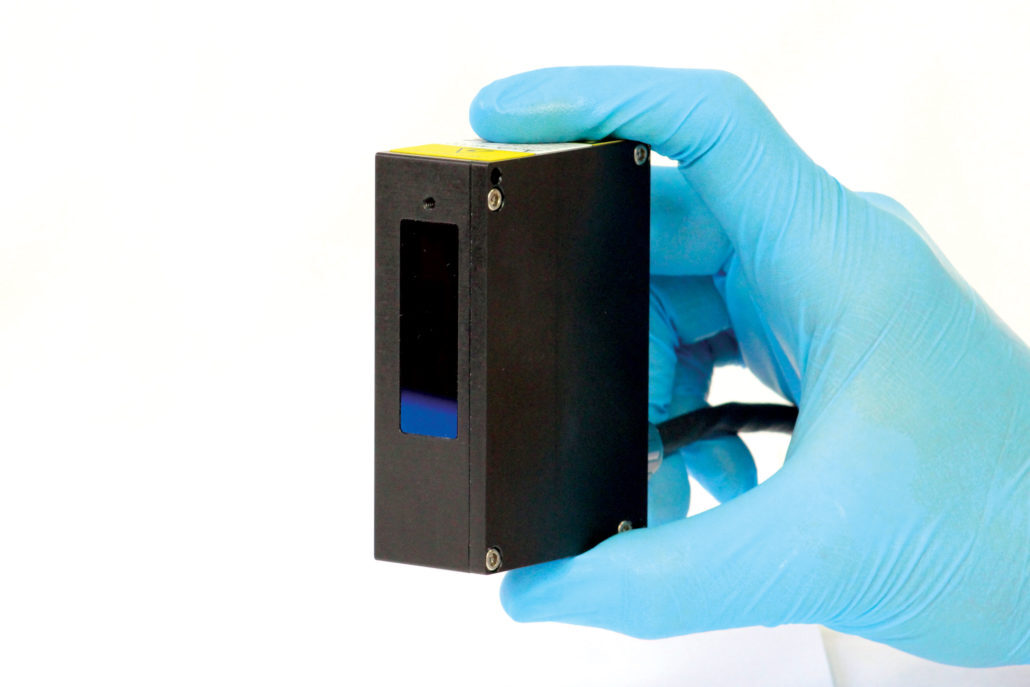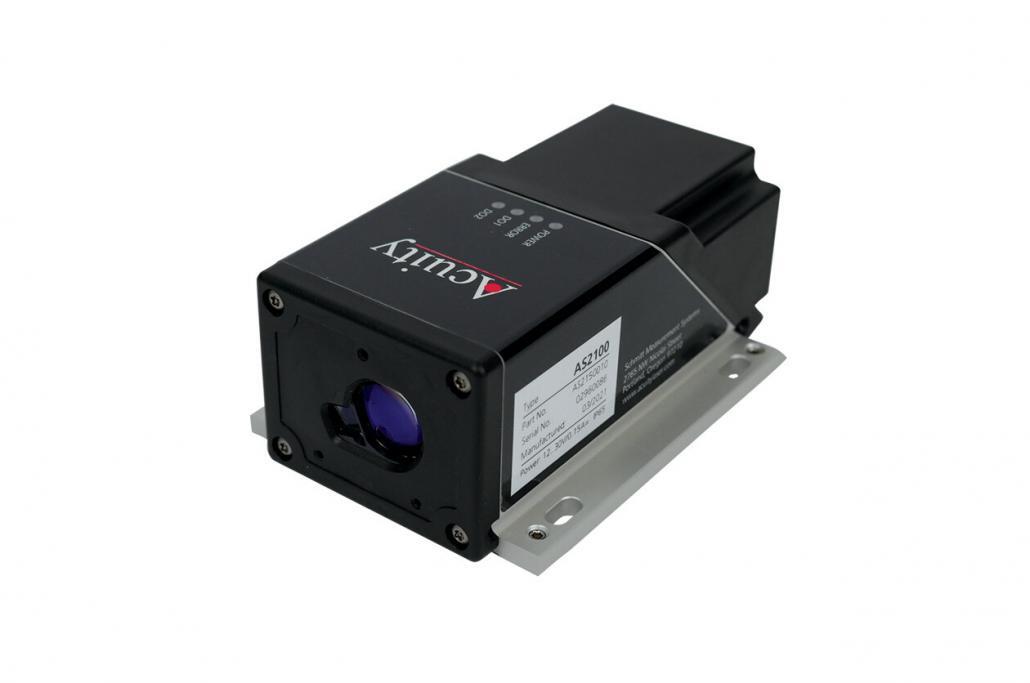Metal thickness as rolled steel passes over a cylinder Posted in: Thickness Measurement – Tags: Automation, Metal and Steel Production
Last Updated: September 21, 2023
Laser Sensor for Metal Thickness Measurement
Inline Thickness Measurement Using Laser Displacement Sensor
Before metal travels over a roller, the laser is “zeroed” out on the roller to be used as a reference point. As metal moves over the top of the roller, the laser calculates the height of the metal to be used as the thickness of the metal. A single laser sensor can be used for one point of measurement or multiple sensors across the roll for multiple thickness measurement points.
Thickness measurements on rollers can be done in different ways with different sensor types (line scanner, confocal sensors). Another way metal roller thickness measurement can be done is by using two triangulation sensors. Two triangulation lasers can be mounted side by side with one laser pointing to a roller and the other laser pointing to the material going over the roller. Due to the typical movement/runout of the rollers, software can be used to subtract the laser pointing to the uncovered roller from the laser measuring the material going over the roller to give a true thickness measurement. Customers can interface into their PLC for automated outputs or use the Acuity touch panel as a visual display for thickness measurement.
This type of thickness measurement can be used for trend analysis over time. Companies use the thickness measurement to see if the wear of the rollers is impacted over time. If the thickness measurement is getting closer to the upper limits of the threshold, operators use this measurement to make adjustments to the rollers.
Sarah has been our technical support and sales engineer for 5+ years. If you've ever reached out to Acuity Laser for tech support, more than likely, Sarah is the one who helped you.




